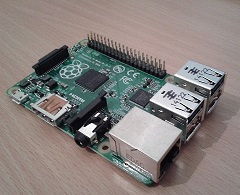PICPgm Quick Start Guide
1. Introduction
This short tutorial shows how to use use the PICPgm programmer on a Windows PC.
2. What you need
To use PICPgm, you need the following environment:
- PC running Windows (Linux is also supported but not covered in this HowTo)
- PICPgm Software installed on your PC (download here)
- PIC programmer hardware (list of supported programmers)
- Parallel port (LPT), serial port (COM) or USB port (only supported USB programmer so far is PICPgm USB programmer)
3. Connect the programmer hardware to you PC
Connect the programmer hardware to your PC.
The PIC programmer hardware shall not have the PIC inserted so far.
4. Start PICPgm
Now start the PICPgm tool. It shall detect the programmer automatically.

If it does not detect the programmer or detects the wrong programmer, manually select the hardware and the PC port it is connected to (Menu: Hardware => Hardware Selection / Configuration).
5. Insert the PIC to be programmed
Put the PIC into the programmer hardware.
Next, autodetect the PIC by pressing the "Autodetect PIC" button in the toolbar.
If the PIC is not getting detected, manually select the PIC via the combo box
in the toolbar.
Note:
Some PICs cannot be automatically identified because they don't have a device ID.
This PICs are marked with a "*" at the end of the name in the device list for
manual PIC selection.
This PICs must be selected manually!

6. Load the HEX file to be programmed
Load the HEX file to be programmed by using the "Browse" button in the "Options" tab. Alternatively, load the HEX file via the menu: "File" => "Load HEX file ...".

7. Program the PIC
Finally, program the PIC by using the "Program PIC" button in the toolbar.



